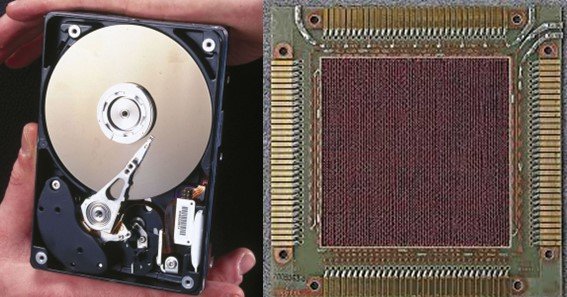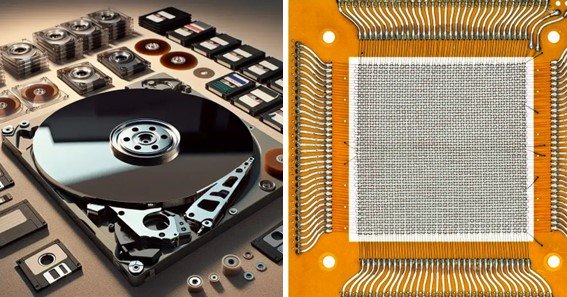Magnets play a pivotal role in memory storage, enabling the reliable and efficient recording of data that powers much of our modern technology. From hard drives to newer forms of magnetic memory, the ability of magnets to store information has transformed how data is managed and accessed in computing and beyond.
How Do Magnets Store Information?
Magnetic storage works by using materials that can be magnetized to store data. The core principle involves magnetic domains, which are small regions within a material where the magnetic moments of atoms are aligned. In a magnetic storage device, like a hard drive, data is stored by altering the direction of these magnetic domains to represent binary information (0s and 1s).
- Hard Disk Drives (HDDs): In traditional HDDs, data is stored on a rotating disk coated with a magnetic material. A read/write head moves across the disk, magnetizing small regions in different directions to encode data. Each tiny area on the disk represents a bit of data, with its magnetic orientation determining whether it is a 0 or 1.
- Magnetic Random Access Memory (MRAM): MRAM is a newer technology that uses magnetic states to store data in memory cells. Unlike traditional RAM, which stores data electrically, MRAM uses magnetic fields, allowing it to retain information even when power is lost. This makes MRAM a promising technology for faster, more durable memory storage.
Applications and Advantages
- Durability: Magnetic storage is highly durable, with the ability to retain data for long periods without degradation.
- Non-volatility: Devices like MRAM do not require power to maintain stored data, making them more reliable and energy-efficient.
- Scalability: Magnetic storage can be scaled to very high densities, enabling large amounts of data to be stored in compact devices.

Conclusion
Magnets are fundamental to the functioning of many memory storage devices. As technology advances, the use of magnets in data storage continues to evolve, promising even more efficient and reliable methods for managing the vast amounts of information in our digital world.
FAQ
How do magnets store information in a hard drive?
Magnets store information by aligning magnetic domains on a disk to represent binary data, with the direction of magnetization indicating a 0 or 1.
What is the role of magnetic domains in data storage?
Magnetic domains are regions where the magnetic moments of atoms are aligned. By controlling these domains, data can be stored and retrieved in devices like hard drives and MRAM.
What is Magnetic Random Access Memory (MRAM)?
MRAM is a type of memory that uses magnetic fields to store data, offering non-volatile storage that retains information even when power is off.
Why is magnetic storage durable?
Magnetic storage is durable because the magnetic states used to store data are stable and do not degrade over time, making it ideal for long-term storage.
Can magnetic storage devices be scaled for large data needs?
Yes, magnetic storage can be scaled to high densities, allowing for the storage of large amounts of data in a compact form.










